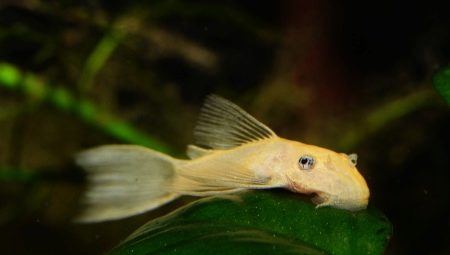Antsistrus albino is one of the most unusual representatives of the world of aquarium fauna. The natural habitat of these exotic bottom fish are the Amazon. Among aquarists, catfish albician ancistruses have gained particular popularity due to their original appearance and amazing unpretentiousness. What are these fish? What are their sizes? What conditions of detention do they need?
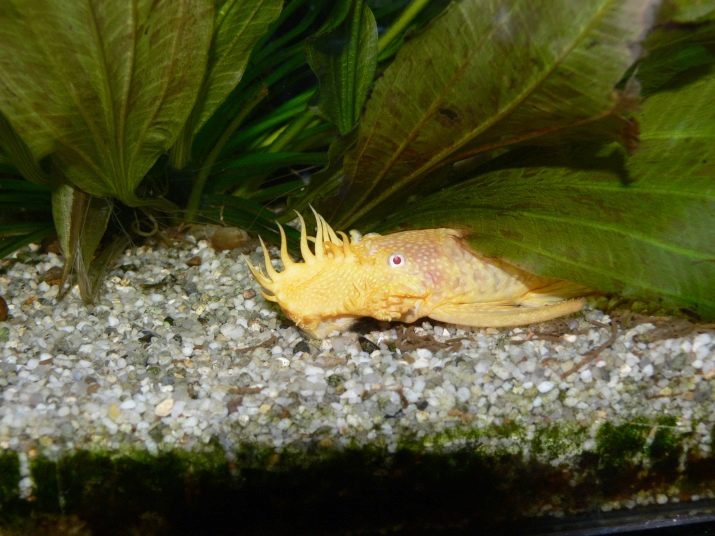
Description
Albinos antiscistruses are small ray-finned fish from the chain-mail catfish family. In the natural habitat, their size can reach 15–18 centimeters. However, when kept at home, they rarely grow more than 6-7 centimeters in length. It is noteworthy that the size of these unusual creatures largely depends on the temperature of the water in the aquarium. The higher this indicator is, the smaller the fish will be.
This variety of aquarium catfish has an elongated and flattened body, a large head with a wide mouth. In this area, they can clearly see large lips with small bulges that facilitate the process of eating algae from hard surfaces.
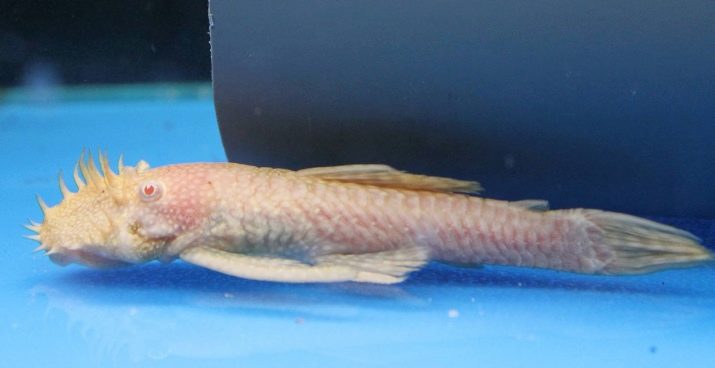
On the body and head of the male albino antiscistrus, there are accumulations of leather growths. This “decoration” allows females to determine the most worthy and strong challenger for procreation.
The females themselves usually do not have such growths, but if they are, then they are very small and only on the sides of the head.
The color of albino antiscistruses is strikingly different from the traditional colors inherent in catfish. The palette of body shades of these creatures ranges from almost white and light yellow to pink and lemon-gold.The fins of the anti-albinos are transparent, have the same shade as the whole body.
Breeders managed to get a very original variety of albino antiscistruses with veil fins. During movement, the long flowing fins and the veil tail of these fish flutter beautifully in the water column, giving the Antsistrus special charm.

These representatives of the aquarium fauna have a calm and peaceful character.
Spending a significant part of the time in shelters at the bottom, they do not interfere with other inhabitants of the aquarium, do not enter into conflicts with them and do not show aggression. This species of catfish quite easily gets along with fish of other species. However, according to observations, male albino antiscistruses can conflict with each other. This usually happens in large flocks during the mating season.
These fish have a well-developed sense of territoriality. They do not claim leadership in the whole aquarium, but these catfish try to protect their territories.
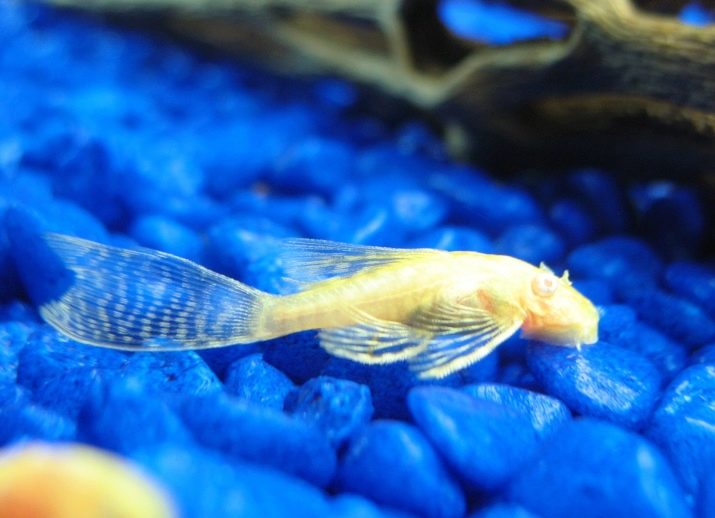
In addition, albino antiscistruses carefully protect the masonry of their eggs, driving away other inhabitants of the aquarium from them.
Like all representatives of the catfish, Antsistrus albino leads a bottom lifestyle, preferring to hide among stones and shelters in the daytime. With the onset of darkness, these creatures increase activity, going in search of food. The average life expectancy of males reaches 5 years, females - 3-4 years.

Conditions of detention
Albinos anticistruses are considered one of the most unpretentious representatives of the world of aquarium fauna. However, for their comfortable existence and well-being, you should still adhere to some recommendations regarding the conditions of detention.
So, these fish feel uncomfortable in cramped small aquariums. To ensure their comfort, a tank with a capacity of at least 60 liters is needed. In the wild, albino ancistruses live in cool ponds in which there is a small current. At home maintenance, it is necessary for them to recreate similar conditions.
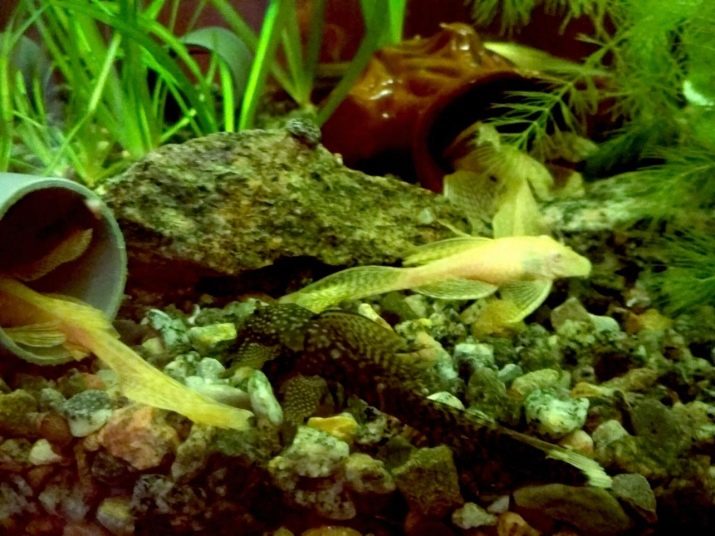
Recommended water temperature in the aquarium is from 20 to 24 °, the acidity level is from 6.5 to 7.6 pH.
These tireless workers are able to spend a significant part of their time in work, cleaning the bottom and walls of the aquarium, decor elements and plants from algae. For this reason, experienced aquarists do not recommend planting fragile plants with brittle foliage, such as cinnamon leaves, in the tank with ancistruses.
Varieties with stiff foliage and strong roots are suitable for decorating an aquarium with these catfish. Such plants include echinodorus, Marsilia, rotundifolia lindernia.
Keep in mind that the antennae of these catfish have a very high sensitivity. In search of food, they feel with them every centimeter of space. Therefore, in the design of the aquarium, sharp stones, snags and decor with cutting edges should be avoided.
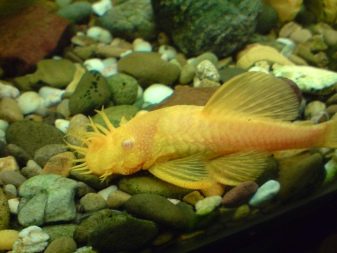
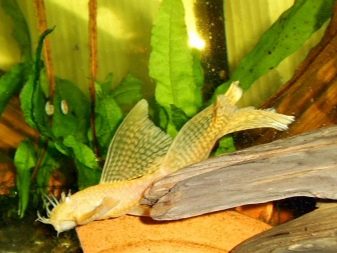
It is desirable that the bottom of the tank be filled with rounded small pebbles or gravel without sharp edges. Clean river sand is also suitable.
Albinos anticistruses painfully perceive an increase in the level of nitrates in the water formed during the decomposition of waste and feed residues. To reduce the harmful effects of nitrates on the inhabitants of the aquarium, it is necessary to install a reliable filtration system in the tank.
In addition, it is worth considering that many bottom fish are often deficient in oxygen, after which they have to rise to the surface of the water. Oxygen starvation can be prevented by installing aeration equipment and a compressor in the aquarium.
Being a bottom fish, Anthistrus catfishes do not like bright lighting too much.
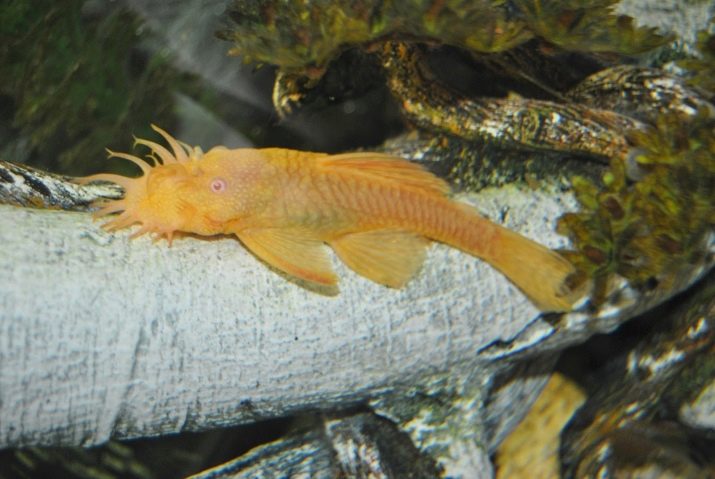
To a greater extent, moderate diffused light suits them. It is also strongly recommended that they provide shelters in the form of snags or underwater caves, where fish can hide in the daytime.
In the wild, these creatures feed on algae and the remains of decomposed organics. When kept at home, they willingly consume both dry and live food. When feeding catfishes, it is important to ensure that the food settles to the bottom, and does not swim on the surface of the water. Otherwise, the fish will remain hungry.
It is curious that albino ancistruses do not refuse from plant foods. So, occasionally they can be fed cucumbers, zucchini, lettuce or spinach. The uneaten food from the aquarium after a meal should be removed without residue.
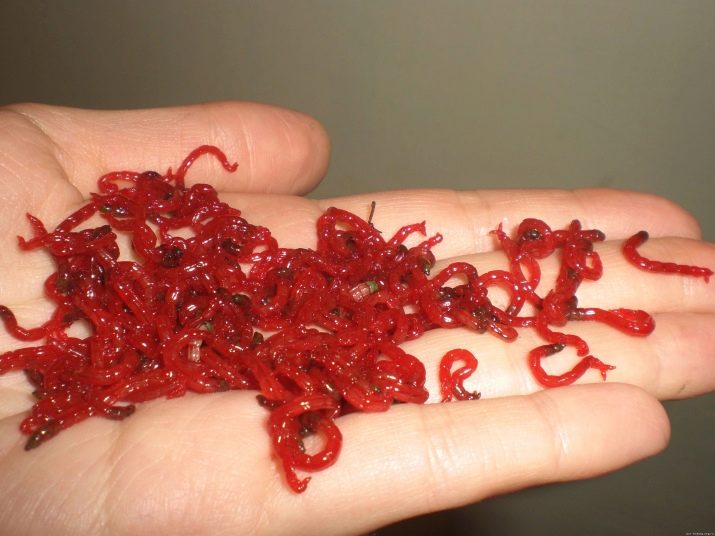
Antcistruses can live favorably with fish that feel comfortable in water with a low temperature.
So, good neighbors for them will be scalars and males, guppies and swordsmen, zebrafish and barbs.
With the reproduction of these catfish there are no special problems. When keeping several aquariums of different sexes in the aquarium, their owner may not doubt that he will soon see the offspring of their catfish. If you create comfortable conditions for these exotic creatures, then pretty quickly their numbers will begin to increase.
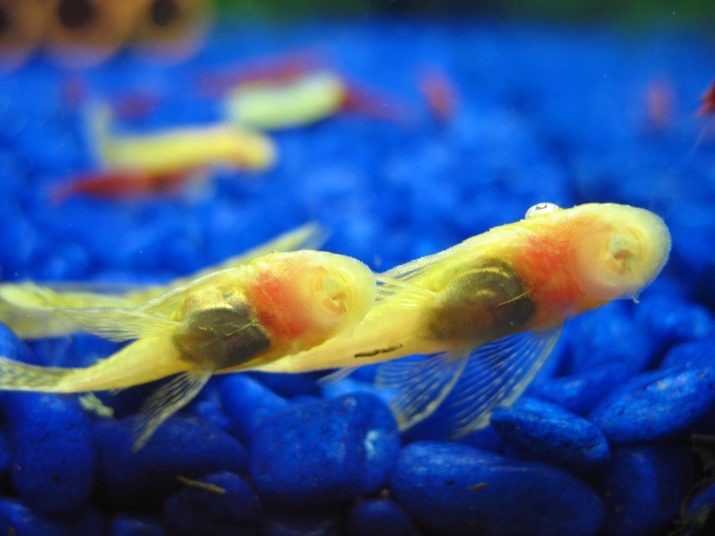
How to contain ancistrus, see below.
